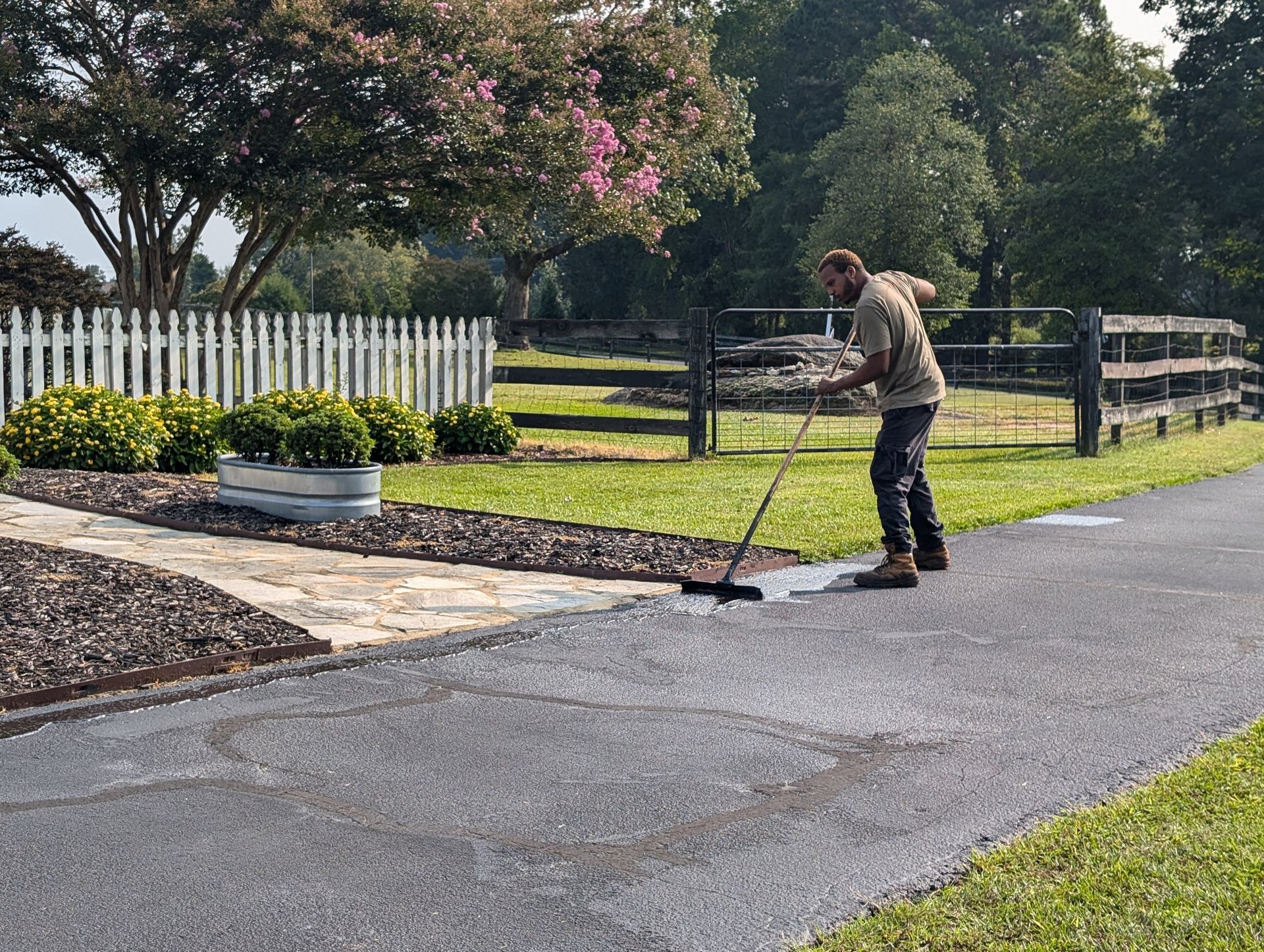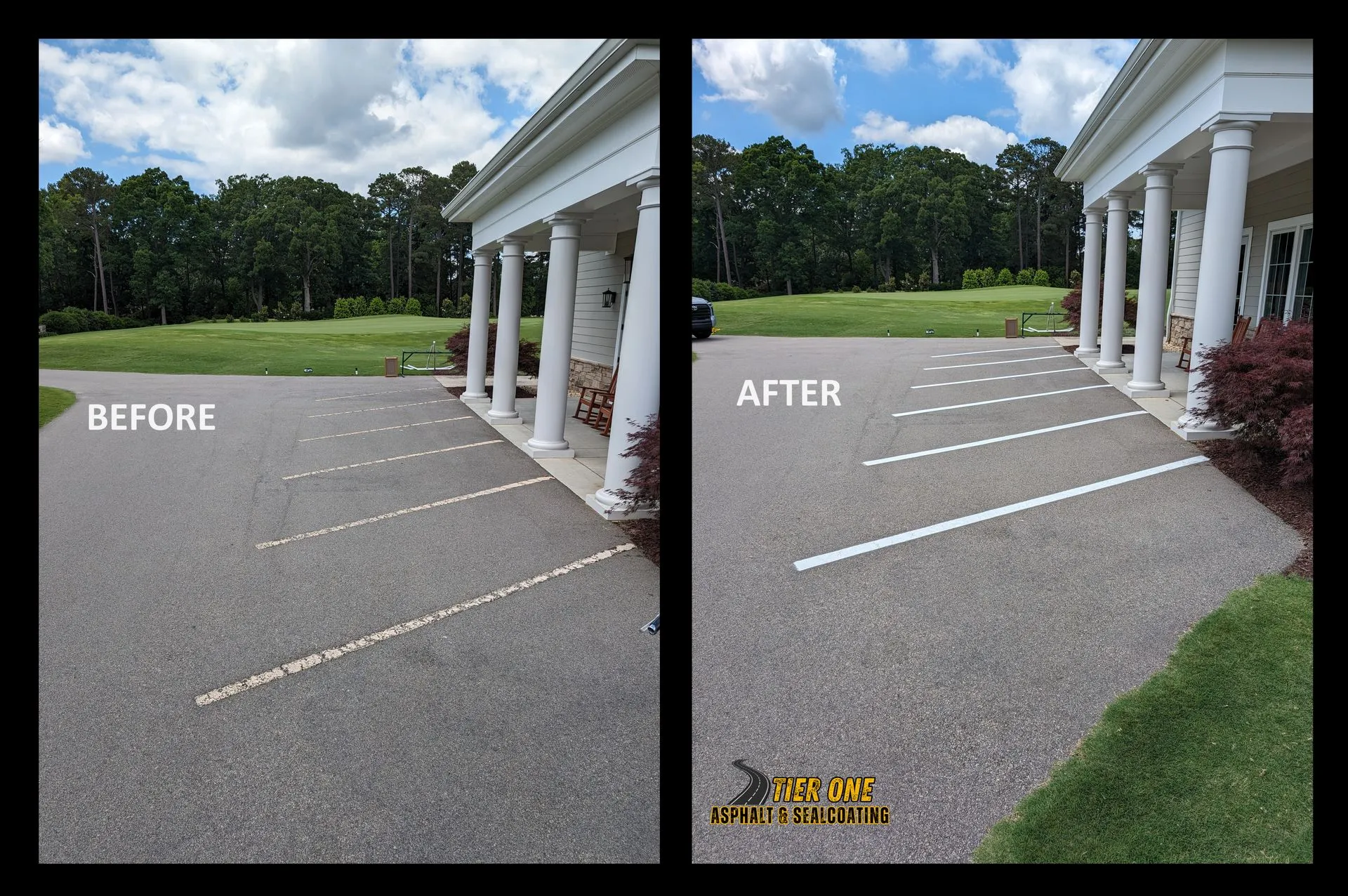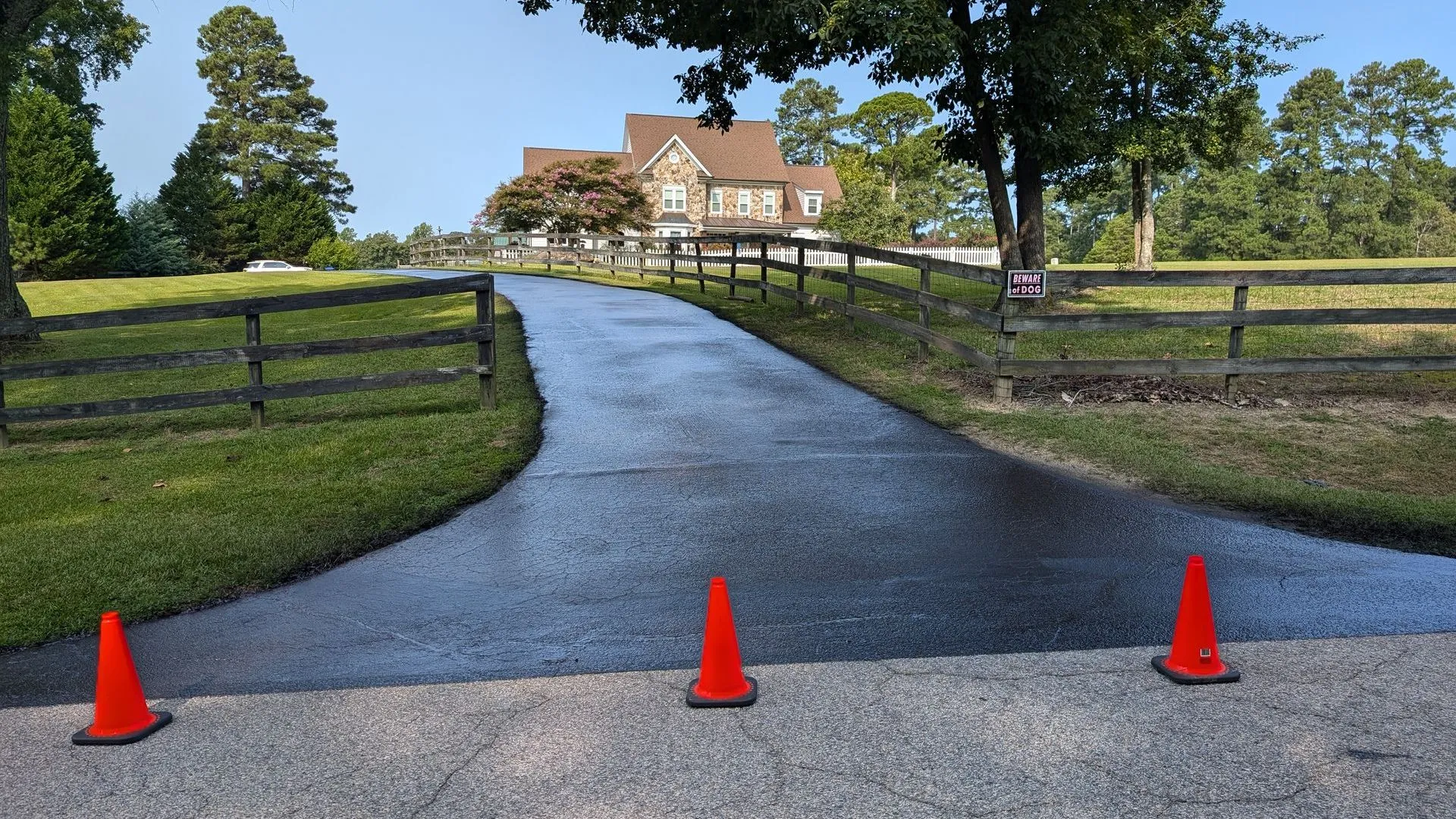Blogs

Your driveway is the first thing people notice when they approach your home. A well-installed asphalt driveway enhances curb appeal, increases property value, and provides a safe and durable surface for vehicles. However, achieving this level of quality depends on one major factor—choosing the right asphalt driveway contractors. With so many companies offering driveway paving services, how can you be sure you're making the best decision for your home? In this guide, we’ll walk you through the key considerations, signs to watch out for, and why Tier One Asphalt and Sealcoating is a trusted name among paving contractors. Why Choose Asphalt for Your Driveway? Asphalt continues to be a top material for residential driveways, thanks to its performance, cost-effectiveness, and durability. Stat: Over 94% of paved surfaces in the U.S. are asphalt, according to the National Asphalt Pavement Association (NAPA). Benefits of Asphalt Driveways Asphalt driveways are a smart investment for homeowners seeking durability, affordability, and quick installation. This paving material offers a smooth, clean finish that enhances curb appeal while withstanding years of traffic and weather exposure. Below are the key reasons why asphalt remains one of the most popular driveway choices in residential construction:

Whether you're planning to pave your driveway, parking lot, or commercial space, understanding the essentials of asphalt paving in Raleigh, NC, is key to a successful project. In this comprehensive guide, we’ll break down why paving matters in the region, how the process works, pricing factors, and why local homeowners and businesses trust Tier One Asphalt and Sealcoating for top-tier service. Stat: According to industry estimates, over 94% of U.S. roads are paved with asphalt , and North Carolina paves over 3,000 miles of roadway annually —highlighting its widespread use and proven performance. Comparison Table: Asphalt vs. Concrete Paving in Raleigh, NC

As public and private infrastructure continues to evolve, the necessity for well-maintained parking lots has grown immensely. In the United States, parking lots are indispensable in urban planning, essentially serving as the 'first impression' of businesses, shopping centers, airports, and more. However, numerous challenges confront parking lot maintenance, from weathering and traffic to environmental regulations and economic pressures, making a strategic approach vital. What is the Current State of Parking Lot Maintenance? The infrastructure within the United States showcases over 500 million parking spaces, providing insight into the sheer scale where maintenance is warranted. Maintaining these spaces is not just about aesthetics. It's about ensuring safety, minimizing liability, and enhancing property value. According to recent studies, well-maintained parking surfaces can extend the lifespan of asphalt by 25-30%, leading to cost efficiencies over time. How Does Weather Impact Parking Lot Longevity? Weather is a significant factor in the wear and tear of parking lots, particularly in regions with harsh winters or sweltering summers. Freeze-thaw cycles can cause severe damage to asphalt surfaces, leading to cracks and potholes. Conversely, heat can cause asphalt to soften and deform under pressure. A report by the Federal Highway Administration underlines the need for tailored maintenance practices to mitigate these natural conditions effectively. What Role Does Traffic Load Play in Deterioration? Traffic load directly influences the rate of parking lot deterioration. Heavy vehicle traffic causes rutting and depressions, while continuous foot traffic can exacerbate surface damage. Studies reveal that a parking lot with regular traffic can deteriorate 30% faster than one with minimal usage, highlighting the importance of considering traffic patterns in maintenance strateies.

Asphalt driveway paving plays a significant role in modern infrastructure, offering durability, cost-effectiveness, and aesthetic appeal. In the United States, where infrastructure development is pivotal for economic growth, choosing the right paving option is crucial. This article delves into the numerous facets of asphalt driveway paving, analyzing the benefits, challenges, and future trends in this sector, supported by data and references from authoritative sources. What Are the Key Benefits of Using Asphalt for Driveways? Asphalt driveways are renowned for their flexibility and resilience, making them a popular choice for homeowners and businesses alike. Here are the key benefits: Durability: Asphalt driveways can last 15-20 years with proper maintenance. Cost-Effectiveness: Initial installation costs are often lower than alternatives like concrete. Quick Installation: Asphalt can be laid quickly, with driveways often ready for use within 24-48 hours after paving. Aesthetic Appeal: Offers a smooth, dark finish that enhances curb appeal. Data from the National Asphalt Pavement Association supports the long lifespan of asphalt pavement under regular maintenance. How Does Asphalt Driveway Paving Support Environmental Goals? Environmental sustainability is increasingly influencing construction and infrastructure projects. Asphalt production and paving can support these goals in several ways: Recyclability: Asphalt is 100% recyclable, with reused materials maintaining quality standards. Energy Efficiency: Asphalt paving consumes less energy compared to other materials like concrete. Reduction of Urban Heat: Specific asphalt mixes are developed to reduce the heat absorption of paved surfaces. According to [EPA reports](https://www.epa.gov/), over 75 million tons of reclaimed asphalt pavement (RAP) are used annually in the USA, proving its recyclability. What Are the Common Challenges Faced with Asphalt Paving? While asphalt provides numerous benefits, it also poses challenges: Cracking and Maintenance: Asphalt can crack due to weather conditions or heavy use, necessitating periodic maintenance. Seasonal Sensitivity: Extreme temperatures can affect the pliability of the asphalt. Oil and Chemical Stains: Spills can stain asphalt surfaces, requiring special cleaners for removal. According to the Federal Highway Administration, regular maintenance can mitigate many of these challenges, significantly extending the lifespan of asphalt surfaces. How Does the Installation Process of Asphalt Driveway Paving Work? Preparation: Proper excavation and grading ensure a stable base for asphalt application. Base Layer: A strong aggregate base layer is critical for weight distribution and longevity. Application: Hot mix asphalt is applied, compacted, and smoothed. Curing: Asphalt typically cures enough for use within 48-72 hours. This process is detailed by [Tier One Asphalt](http://tieroneasphalt.com/) as part of their professional paving services. What Maintenance Tips Ensure Asphalt Driveway Longevity? Regular maintenance is key to ensuring the longevity of asphalt driveways: Sealcoating: Applying a sealant every 2-3 years prevents oxidation and weather damage. Crack Filling: Prompt repair of cracks prevents moisture ingress and further damage. Cleaning: Regular cleaning prevents damage from debris and chemical stains. Industry studies on maintenance practices recommend such regular interventions for maximizing lifespan and performance. What Are the Cost Factors Associated with Asphalt Paving? The cost of paving an asphalt driveway can vary, influenced by several factors:





